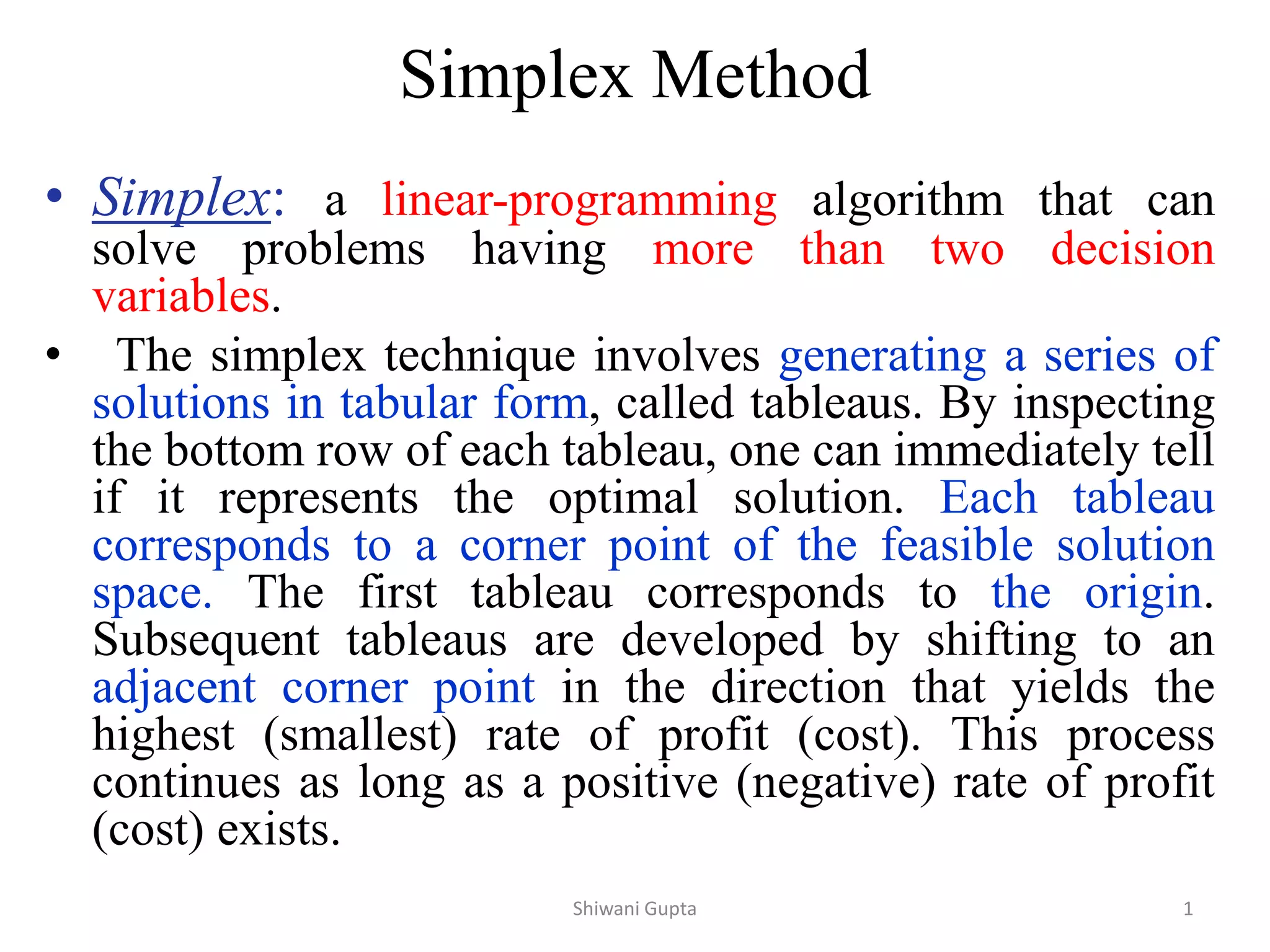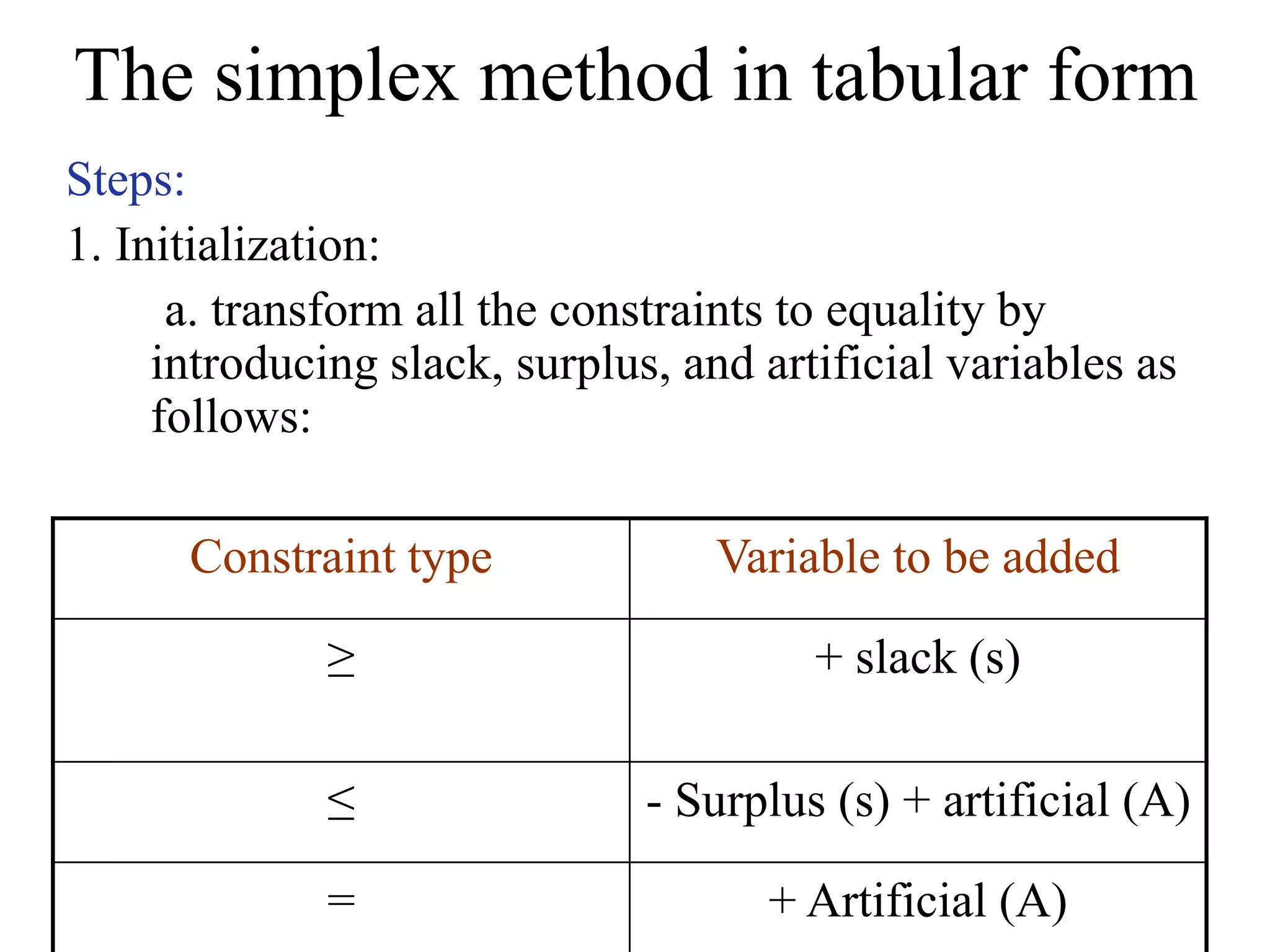The simplex method is a linear programming algorithm that can solve problems with more than two decision variables. It works by generating a series of solutions, called tableaus, where each tableau corresponds to a corner point of the feasible solution space. The algorithm starts at the initial tableau, which corresponds to the origin. It then shifts to adjacent corner points, moving in the direction that optimizes the objective function. This process of generating new tableaus continues until an optimal solution is found.





















